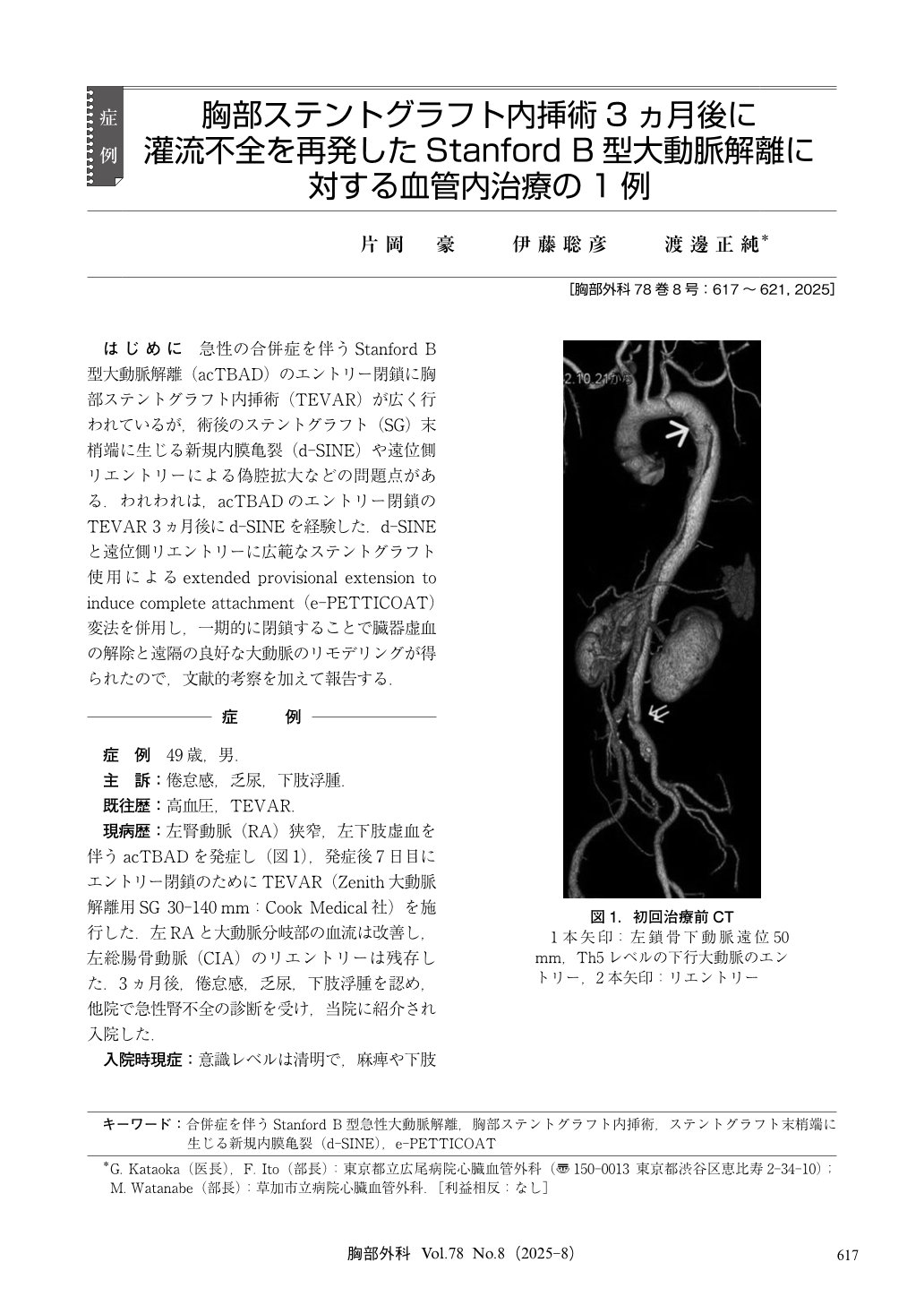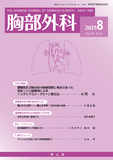Japanese
English
- 有料閲覧
- Abstract 文献概要
- 1ページ目 Look Inside
- 参考文献 Reference
はじめに 急性の合併症を伴うStanford B型大動脈解離(acTBAD)のエントリー閉鎖に胸部ステントグラフト内挿術(TEVAR)が広く行われているが,術後のステントグラフト(SG)末梢端に生じる新規内膜亀裂(d-SINE)や遠位側リエントリーによる偽腔拡大などの問題点がある.われわれは,acTBADのエントリー閉鎖のTEVAR 3ヵ月後にd-SINEを経験した.d-SINEと遠位側リエントリーに広範なステントグラフト使用によるextended provisional extension to induce complete attachment(e-PETTICOAT)変法を併用し,一期的に閉鎖することで臓器虚血の解除と遠隔の良好な大動脈のリモデリングが得られたので,文献的考察を加えて報告する.
We report a case of a 49-year-old man with distal stent-graft-induced new entry (d-SINE) three months after first thoracic endovascular aortic repair (TEVAR) for acute complicated type B aortic dissection (acTBAD). The d-SINE led to acTBAD recurrence of acTBAD, resulting in malperfusion of the lower limbs and kidneys. The d-SINE was observed in the aorta at the Th8 level, and there was an obvious re-entry in the left common iliac artery (CIA).
Additional TEVAR was performed using a modified extended provisional extension to induce complete attachment (e-PETTICOAT). Without balloon dilation, a straight stent graft (SG) was inserted into the aorta at the level of superior to the celiac trunk, then a bifurcated SG was placed from below the renal artery (RA) to the CIA, and finally a bare stent was inserted between them. The d-SINE and retry tears of the acTBAD were closed simultaneously. Despite extensive stent graft placement, we were able to improve the malperfusion of the lower limbs and kidneys and prevent aortic rupture without causing neurological complications. No SINE occurred, and good aortic remodeling was achieved from the left subclavian artery (LCA) to the CIA 14 months after the additional TEVAR.

© Nankodo Co., Ltd., 2025


